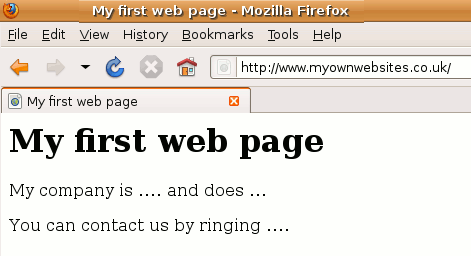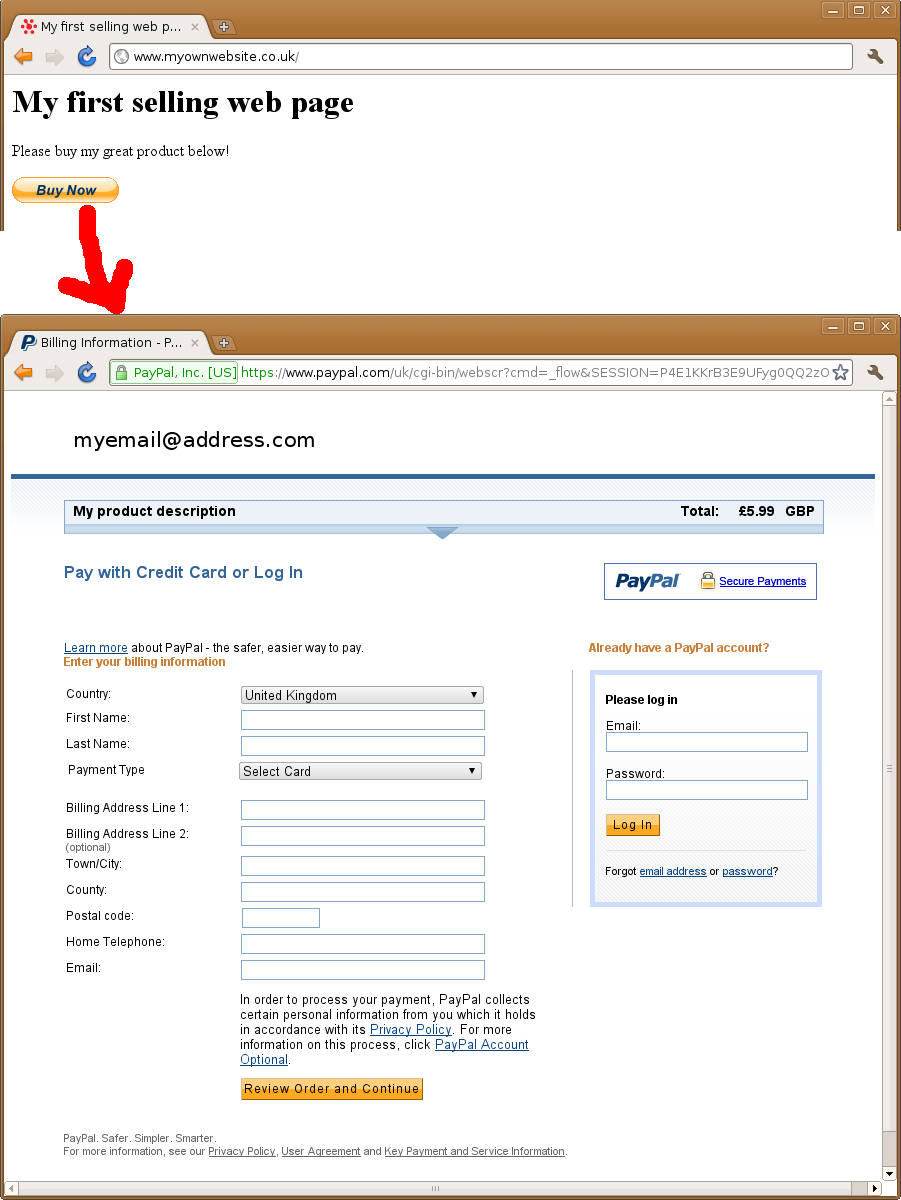How to create an ecommerce website
Would you like know how to create an ecommerce website? This article explains the first steps to creating your own ecommerce website, all by yourself
1. A domain name
First of all, you need a domain name, something like www.myownwebsite.co.uk. It doesn't really matter whether it ends in .com or .co.uk (or .fr or .de, etc). Com domains are slightly more expensive and psychologically have a more international feel to them. Co.uk domains seem more local and are more likely to be available. Shorter and without hyphens or tricky spelling is preferable. The domain name should be easy enough to say over the phone.
Once you've brainstormed a few variations, visit a domain registrar like www.123reg.co.uk and buy it, usually for 2 years.
2. Hosting
Next you need somewhere to put your website, some "web space". This is really just a bit of hard disc space on a big fast air-conditioned computer somewhere. It is far easier to rent this space from a hosting company, than try to have your website on your own computer in your office or home.
How much space you want, and how fast it should be, will affect the price, which can vary from ?5/month to ?40/month or more.
For convenience, you can buy your hosting from the same company you bought your domain name from. In fact, many companies like www.1and1.co.uk focus mainly on selling the hosting and include the domain name for free.
At the end of the process, the hosting company will send you an email with two very important sets of details. The first is a link, user name and password for your Control Panel or Management Area - this is where you can set up your email accounts like . The second is your FTP host, user name and password.?
Note that broadband providers like BT, Virgin, etc usually offer some free web space when you sign up, you could use this, but it's likely to have an unfriendly and hard to remember address.
3. Make your first web page
Many hosting companies can sell you bits of software (like 1and1's "MyBusiness Site") which will help you build your own website. Usually you pay a monthly fee for these, and they take you through a series of steps where you choose colours and fonts, enter your company name and some blurb and a miniature website is created.
But for a real do-it-yourself approach, you will need the FTP details from above, and a piece of software for creating web pages. The software might be Dreamweaver - which help you graphically build a web page; or Word - where you can type a document, add some colours and then "Save as HTML"; or a text editor like Notepad - where you will type HTML directly.
HTML stands for Hypertext Markup Language. It is the language which web pages are written in. If you go to any website, click the right mouse button, and choose View Source, you will see HTML in its native environment.
For a really basic approach, start up Notepad or SimpleText or a basic text editor and type in something like the following:
My first web page My first web page
My company is .... and does ...
You can contact us by ringing ....
 The stuff between the < and > is HTML. They are special tags which surround bits of text and tell Firefox and Safari and Internet Explorer how to display your information. Save what you've typed with the file name "index.html". Then open the file in your web browser, and you'll see the relationship between HTML and what you see on the screen.
The stuff between the < and > is HTML. They are special tags which surround bits of text and tell Firefox and Safari and Internet Explorer how to display your information. Save what you've typed with the file name "index.html". Then open the file in your web browser, and you'll see the relationship between HTML and what you see on the screen.
4. Putting the web page on your website
Now you'll need to put that new index.html file onto your web space. For that you will use some FTP software. You may need to find and download this software first. Filezilla is a very popular FTP program.
Once you've downloaded it, fire it up, and create a new FTP connection, entering the FTP host name, user name and password provided by your hosting company.
Once connected, you will see your own computer on the left and your web space on the right. Navigate to your new index.html file on your own computer. Your web space on the right may have several folders as well. Click into the one titled httpdocs or public_html if they are there.
Then drag your index.html file from your own computer to your web space. Now go back to your web browser and visit your web site. Hopefully you will see the web page you created above.
5. Add ecommcerce so you can sell stuff
The quickest way to sell stuff on your new website, is to add a PayPal Buy Now button. You can hide the price and product name behind the scenes, so your customers just have to click the button to pay for it. You'll need to sign up for a PayPal account too. Use the HTML below but replace with your PayPal email address, product description and product price. It will look like the screenshot on the right.
My first selling web page My first selling web page
Please buy my great product below!

6. Do More Stuff
Congratulations! You've just created an ecommerce website! Admittedly it is rather small and not very attractive, and it only sells one product at a time. You will need to learn more about HTML and CSS to make it bigger and prettier, and a bit of Search Engine Optimisation to make sure it gets found.
And if you want to be able to change it without dealing with Dreamweaver or Notepad or FTP, you will need to consider installing a Content Management System (CMS) - something like Wordpress would do the trick - though for that, your hosting will need to include a MySQL database and the ability to show PHP pages.
And if you would like your customers to buy more than one item at a time, or if you want to let them login, or receive discounts, or have complex delivery costs, or any other ecommerce facility, you'll need to learn or install some sort of ecommerce package.
7. Or Come To Us!
 Or you can skip all of the above and give us a ring. We offer a fully featured ecommerce package which lets you skip all of the above, and just fill in your product names and prices into a friendly form. Check out our extensive manual to see how easy it is.
Or you can skip all of the above and give us a ring. We offer a fully featured ecommerce package which lets you skip all of the above, and just fill in your product names and prices into a friendly form. Check out our extensive manual to see how easy it is.
Alternatively, if you don't need to sell online yet, but would like to be able to easily create and manage your website, try out Site-in-a-day. You can come and spend a day with us, in our office, designing and building your website, and taking home a new email address and password which will let you login and make changes whenever you would like without learning any HTML or FTP or any of the above.
LOGIN AREA
CONTACT US TODAY?





